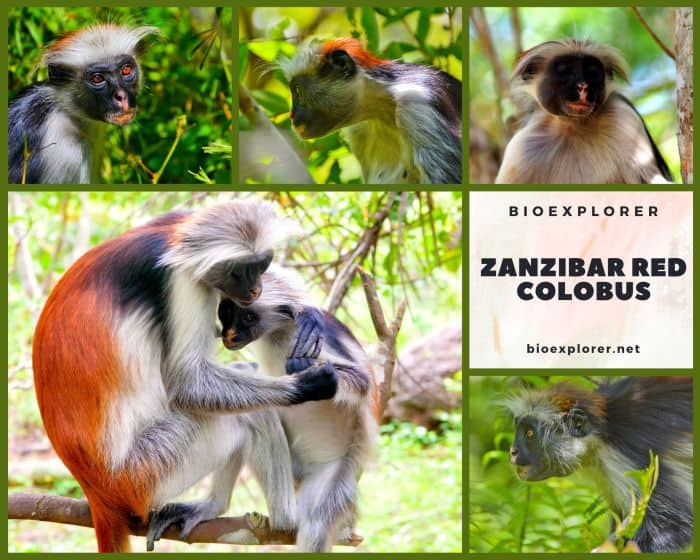
| Animalia | Primates | Cercopithecidae | Piliocolobus | Piliocolobus kirkii |
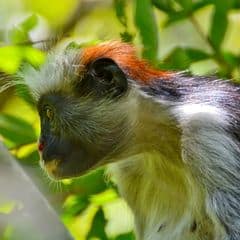

- Common Name: Zanzibar Red Colobus
- Taxonomy Classification Year: 1868
- Monkey Size: 45 to 70 cm (17.72 to 27.56 in)
- Skin Color(s): Dark red to black
- Habitat: Forest, scrub forest
- Diet: Herbivorous
- Native Countries: Tanzania
Zanzibar Red Colobus Distribution
Zanzibar Red Colobus Characteristics
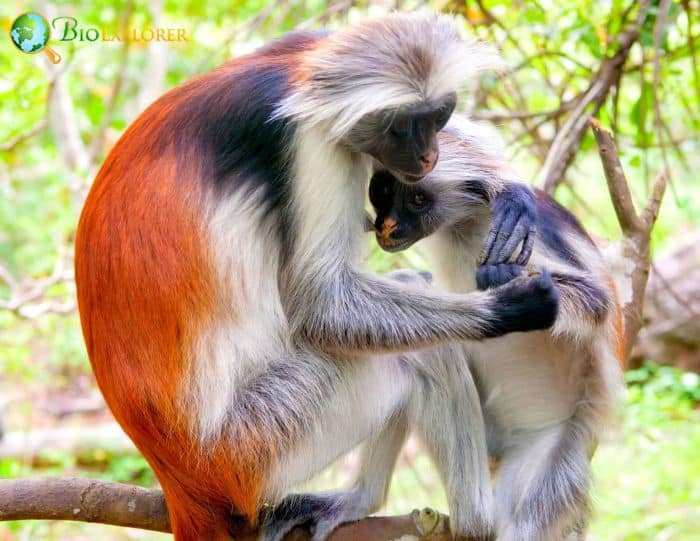
The Zanzibar red colobus[1] (Piliocolobus kirkii) is endemic to Unguja, the main island of the Zanzibar archipelago off the coast of Tanzania.
- These medium-sized monkeys have small bellies typical of leaf-eating monkeys.
- Their coat (or pelt) ranges from dark red to black and is sometimes accented by a black stripe down their shoulders and arms.
- The middle and lower back color varies from reddish brown to orange. Zanzibar Red colobus monkeys have black hands, feet, and faces with long white hair.
- Their lips and nose are pink. The abdomen or abdominal region is white to light gray.
- Babies have only black and white fur, with the introduction of red and brown pigment occurring around 3 to 5 months of age.
- Full adult coloration is not achieved until the age group of 6 to 11 months. All types of colobus monkeys have stub thumbs as well as long tails used for balance and posture.
- Their particularly long hind legs facilitate large leaps between trees, as do their long fingers, which form a hook-like grip that allows them to grasp branches quickly.
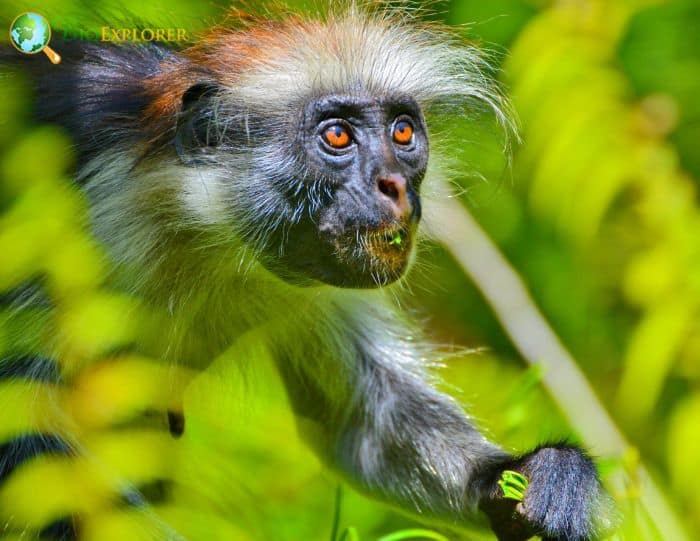
Zanzibar Red Colobus Facts
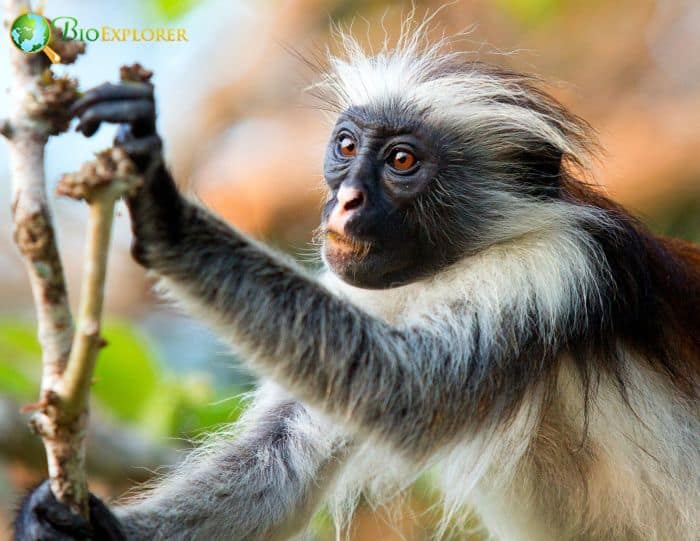
- The Zanzibar red colobus, often referred to as Kirk’s red colobus is named after Sir John Kirk, the British resident of Zanzibar who first spotted these creatures.
- Locals call it Kima Punju, which means poisonous monkey in Swahili, because of its distinctive pungent smell.
- Due to their slow digestive tract, they are the slowest of all colobus monkey species.
- Long calls consisting of howls and high-pitched cries are given to express dominance and sexual interest in females.
- Both sexes are considered promiscuous, and females mate with multiple males during estrus.
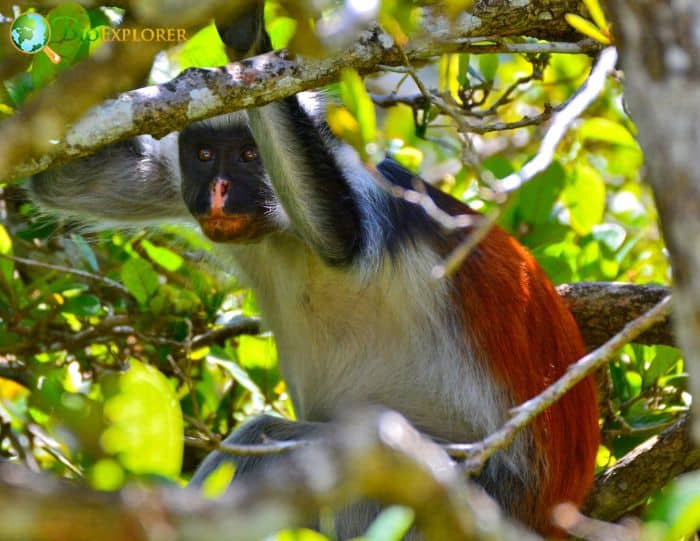
Suggested Reading: Every Type of Monkey
Cite This Page
APA7MLA8Chicago
BioExplorer.net. (2025, April 14). Zanzibar Red Colobus. Bio Explorer. https://www.bioexplorer.net/animals/mammals/monkeys/zanzibar-red-colobus/.
BioExplorer.net. "Zanzibar Red Colobus" Bio Explorer, 14 April 2025, https://www.bioexplorer.net/animals/mammals/monkeys/zanzibar-red-colobus/.
BioExplorer.net. "Zanzibar Red Colobus" Bio Explorer, April 14 2025. https://www.bioexplorer.net/animals/mammals/monkeys/zanzibar-red-colobus/.










